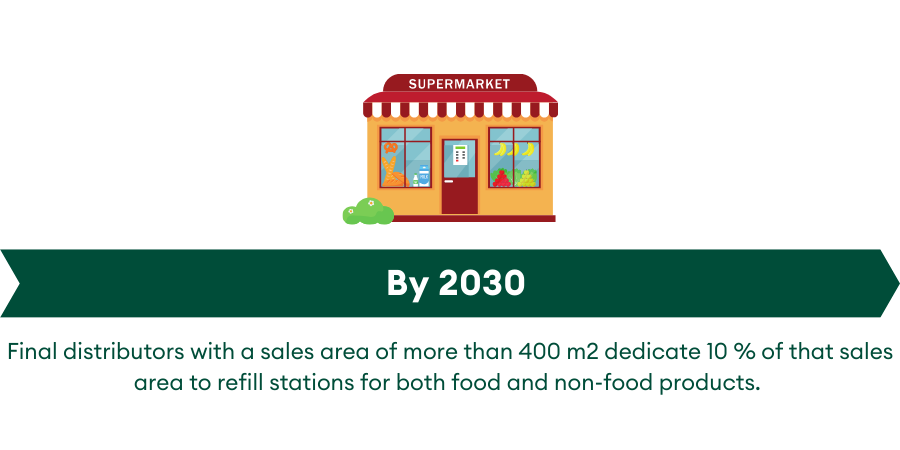Part 2 | Understanding the PPWR EU-Regulation: Prevention measures and targets

Packaging waste generation is constantly rising and is amplified by increased on-the-go consumption and e-commerce. To tackle this, the regulation defines prevention as key. Prevention of packaging waste refers to measures and strategies aimed at minimising the generation of waste at the source rather than dealing with it after it has been created.
In this article, we aim to give you a first overview on the prevention measures and targets defined in the EU regulation on packaging and packaging waste.
Packaging waste reduction target
The regulation sets an overall ambitious reduction target on packaging waste. A 3-step plan aiming to reduce packaging waste by 15% in 2040 compared to 2018 is put into place:
|
By 2030 |
By 2035 | By 2040 |
| -5% | -10% | -15% |
Moreover, specific supporting prevention measures to reach the overall packaging waste reduction target are introduced:
Restrictions on use of certain packaging formats
In order to facilitate the achievement of the packaging waste prevention targets, unnecessary or avoidable packaging will no longer be allowed to be placed on the market. These include plastic packaging in the format of*:
-
Single-use plastic grouped packaging used at the point of sale to group goods sold in bottles, cans, tins, pots, tubs and packets
-
Single-use plastic packaging for less than 1.5 kg pre-packed fresh fruit and vegetables
-
Single-use plastic packaging for foods and beverages filled and consumed within the premises in the HORECA sector
-
Single-use plastic packaging in the HORECA sector containing individual portions or servings, used for condiments, preserves, sauces, coffee creamer, sugar and seasoning
-
Single-use accommodation sector packaging such as packaging for cosmetics, hygiene and toiletry products
-
Very lightweight plastic carrier bags
*Exceptions not mentioned here
Systems for reuse and reuse targets
Reusable packaging is packaging that is used multiple times for the same purpose for which it was conceived. To guarantee that packaging marketed as reusable is actually reused, systems for reuse that ensure packaging is collected for reuse must be established in the key sectors of transport, sales and grouped packaging, beverage packaging, as well as food and beverage packaging intended for take-away.
The Reuse targets to be achieved for these sectors are the following*:
-
TRANSPORT PACKAGING:
Transport packaging or sales packaging including e-commerce used for transporting products within the territory of the Union
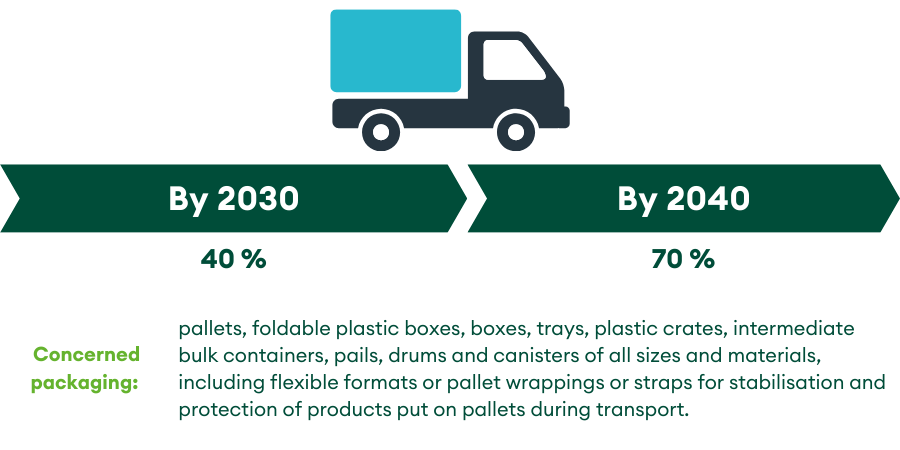
For businesses using transport packaging between their own sites or those of their affiliates or partners, all above-mentioned transport packaging used must be reusable.
-
GROUPED PACKAGING:
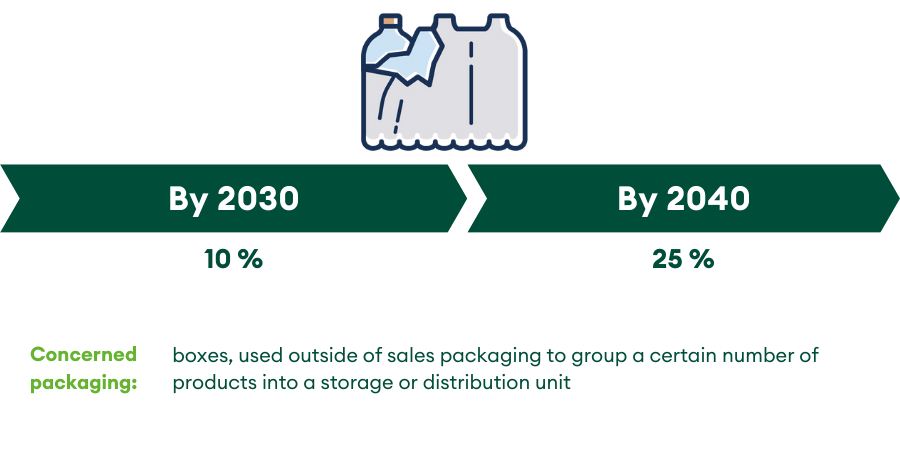
-
ALCOHOLIC AND NON-ALCOHOLIC BEVERAGES IN SALES PACKAGING
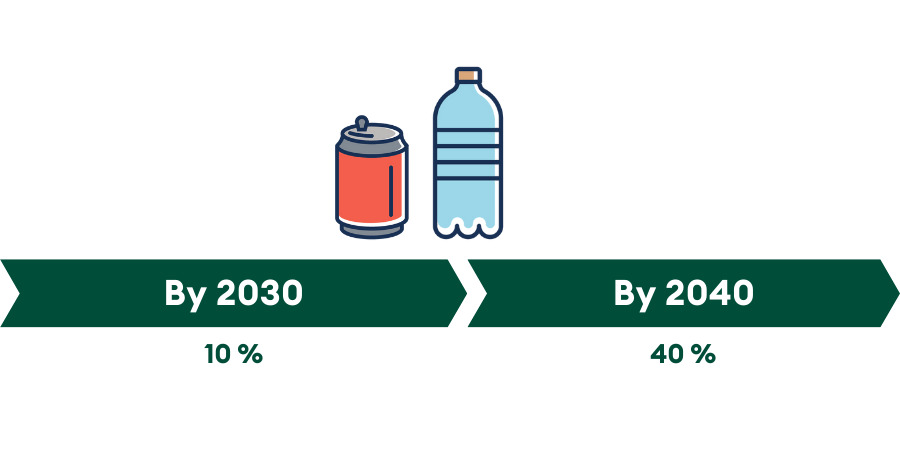
-
TAKEAWAY PACKAGING IN THE HORECA SECTOR
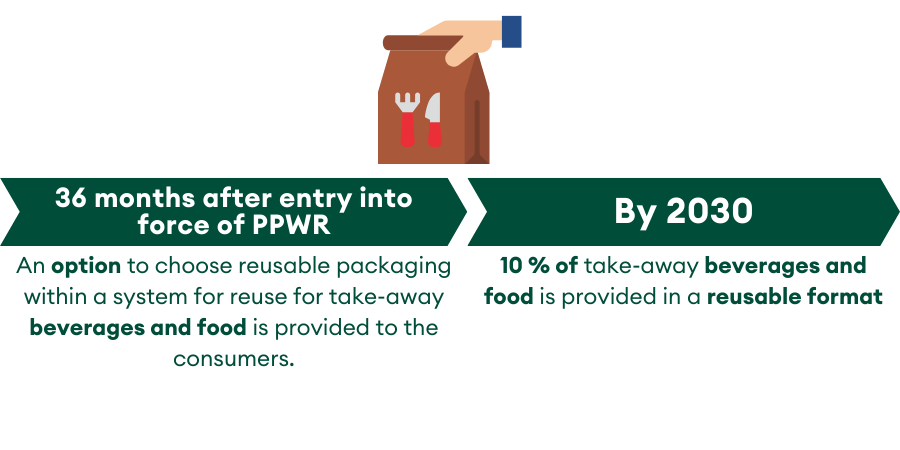
*Exceptions not mentioned here
Obligations related to refill
The PPWR introduces the concept of “refill”. Refill means that a container—either one that the customer already owns or one they buy at the store—is filled up again with a product. This can be done by the customer or by the store where the product is bought. Following refill targets will be introduced*:
In the HORECA sector:
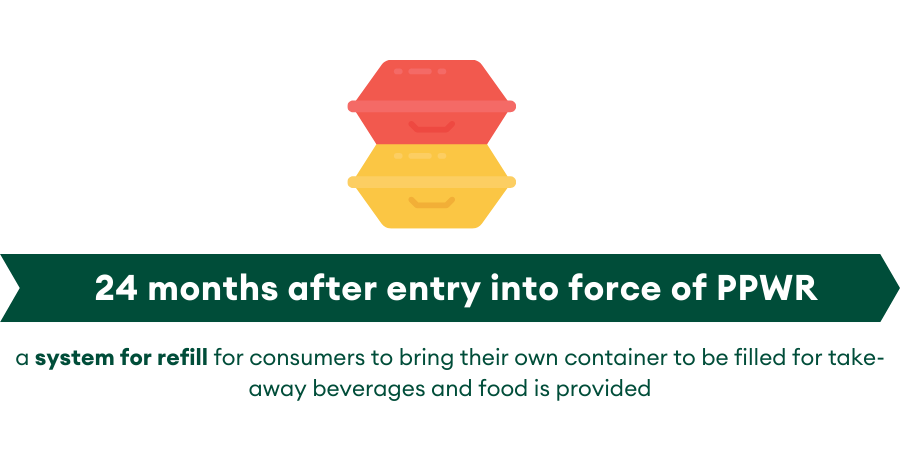
Within the distribution:
Reduction of plastic carrier bags
In view of the continued high consumption levels of plastic carrier bags, the PPWR aims for a sustained reduction through harmonised definitions and new reporting requirements regarding all plastic carrier bags, regardless of their wall thickness. The already existing target of an annual consumption of maximum 40 lightweight plastic carrier bags per person remains in place.
Deposit and return systems
In view to increase the supply of good quality secondary raw material suitable for closed loop recycling and reduce beverage containers litter, the regulation introduces a collection target rate of at least 90 % of single-use plastic beverage bottles and single-use metal beverage containers with the capacity of up to three litres. In order to reach that target, the setting up of deposit and return systems for a separate collection of this packaging is required*.
Introduction of deposit and return system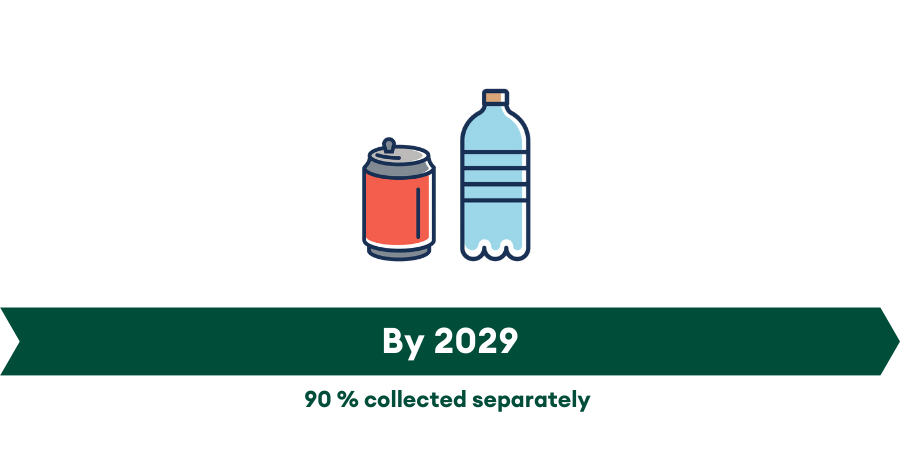
*Exceptions not mentioned here
Current status and next steps
The PPWR was recently adopted by the European Parliament, but it is not in force yet. It still needs to be adopted by the Commission and the Council, and the exact timeline for its implementation is not yet known. We will continue to provide updates and guidance to help you navigate these changes.
Keep an eye on our communications to stay informed on the latest developments.
Subscribe to our newsletters via this form.
Your Valorlux Team

